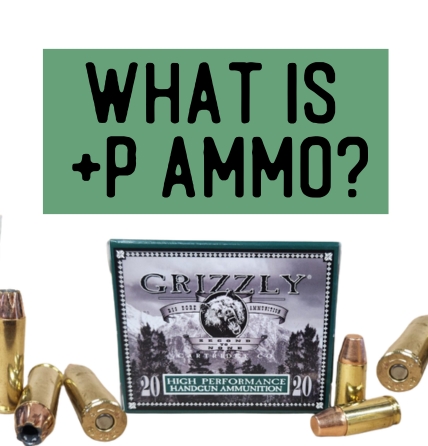Little Known Facts About Ammunition Pro Llc.
Little Known Facts About Ammunition Pro Llc.
Blog Article
Excitement About Ammunition Pro Llc
Table of ContentsAmmunition Pro Llc Can Be Fun For EveryoneThe 8-Minute Rule for Ammunition Pro LlcThe 15-Second Trick For Ammunition Pro LlcIndicators on Ammunition Pro Llc You Should KnowThe 9-Second Trick For Ammunition Pro Llc
A lot of modern-day cartridges contain four main components the case, primer, propellant, and projectile. A shotgun cartridge, more frequently referred to as a shell, is composed of five components the instance, primer, propellant, projectile(s) and heap. Let's take a look at each part of a round, exactly how it functions, and alternatives that may be available: The covering is the container, or real estate, right into which all the other parts fit.Technically, the boosted use steels apart from brass have actually made this jargon imprecise, nevertheless, it stays a typically made use of and accepted term. If you will certainly be refilling you should stick to brass, brass alloy or plated brass. Pure first run brass is best; nonetheless, recycled brass can be used too.
Other kinds of brass, consisting of alloys or layered versions, can be utilized yet will have a much shorter lifetime. Early weapons relied on gunpowder, which is a details combination of chemicals that sheds rapidly and promptly creates increasing gases as it sheds. Creating the ability to restrict and regulate the burning process and gas growth was the vital to establishing reputable, and safe, guns.
As a result of its instability gunpowder has actually been replaced by modern-day chemical compounds that achieve the very same outcome without the risk. The most typical of these mixes is saltpeter, sulfur, and charcoal. The outcome is a propellant that melts fast, is reputable and much more secure. The propellant calls for a smaller cost to be safely igniting and this is accomplished by the guide.
Get This Report on Ammunition Pro Llc
As is the situation with the propellant, gunpowder has been changed by even more steady modern chemical compounds in the building of the guide. Quality guides are vital to appropriate, dependable ammo efficiency. A damaged or damp guide will often lead to failing to fire or a delayed, hang, fire scenario.
the bulletEvery gun needs an object that will certainly be gotten rid of from the firearm which will, subsequently, be utilized to hit the intended target. This item is called the projectile, although the terms bullet, slug or shot are frequently made use of in its place. In truth rifles & hand guns fire bullets while shotguns fire slugs or shot, the latter being utilized to define a team of pellets gotten rid of from a solitary shell or case.
Some makers have actually even explore including a polymer cone to hollow factor designs. The result is managed development and deeper penetration. Bullets, which is an acceptable term for the projectile for the majority of modern firearms, been available in a selection of kinds. Each is designed for a different function and may or might not cycle effectively in every firearm.

7 Easy Facts About Ammunition Pro Llc Explained
As reviewed previously, the situation is the real estate right into which the other parts are housed. When it comes to centerfire cartridges (the most typical kind of contemporary ammo) the primer is fitted into a pocket in the base of the situation, the propellant is packed right into the hollow indoor area and a projectile (aka bullet) is secured right into the open end.
The shooting pin, consequently, moved quickly ahead and strikes the primer. As soon as struck by the shooting pin the primer ignites and almost instantly ignites the propellant by permitting a fire to enter the cartridge via a tiny hole behind the primer cap. This results in a rapid chemical response that produces expanding gases which, as a result of the restricted space within the instance, trigger the projectile to be rapidly eliminated.
Certainly, every firearm proprietor has a responsibility to review the owner's manual and method safe capturing. Before you recognize it, you will be the one others involve for info, waiting patiently while you fire so they can ask "Is it a bullet, ammunition, or cartridge?".
The Best Strategy To Use For Ammunition Pro Llc

All are examples of self-supporting ammo, which has been with us for more than a century. Utilizing these four components, ammo is either made by factories or handloaders, and though the makeup and layout of the fundamental components have actually developed and proceed to do so, their general function and just how they function together have not.
Cartridge instances are normally made of brass. They will certainly hold the primer, gunpowder, and projectile. (Photo/Richard Mann)The cartridge case is what holds all self-contained ammunition with each other. With rifle and pistol ammunition, the situation is often referred to as "brass." With shotguns, the situation is most typically called a shell or a hull.
Ammunition Pro Llc Fundamentals Explained
Brass cases are reloadable, while steel situations are not. With shotgun hulls or coverings, the base is made of brass for toughness, and the remainder of the case is made of plastic for economic climate.
With the majority of shotgun coverings, additional information regarding the tons is published on the plastic section of the hull. Gun Ammo. Centerfire guides match the cartridge or covering head, and when impacted by the firing pin they create a spark to start the gunpowder burn. (Photo/Richard Mann)There are 2 kinds of priming methods utilized in modern, self-contained ammunition
Report this page